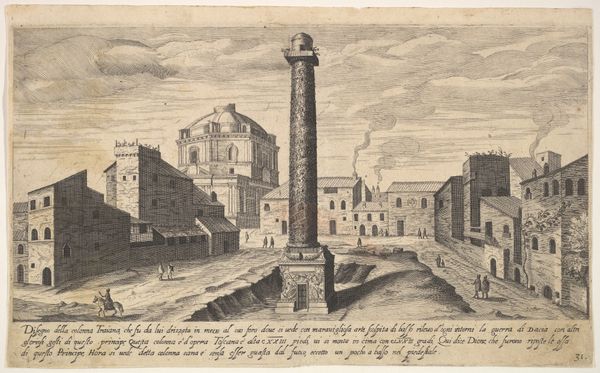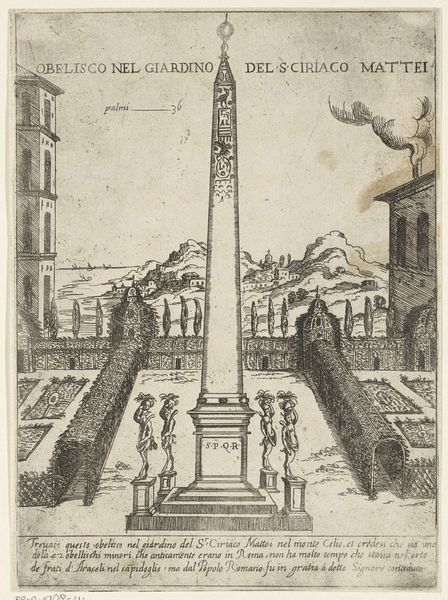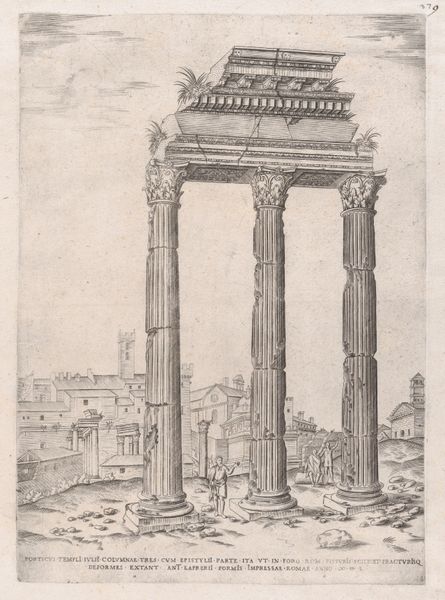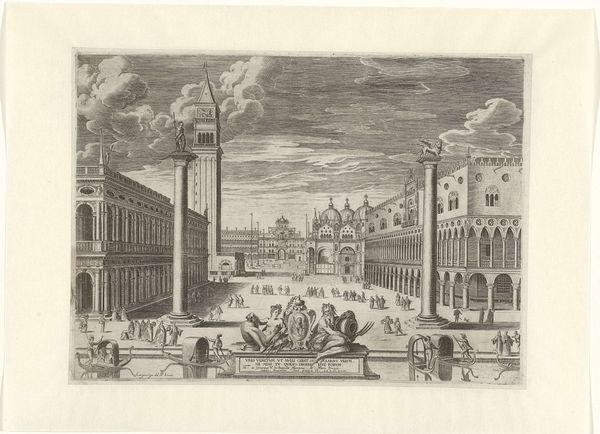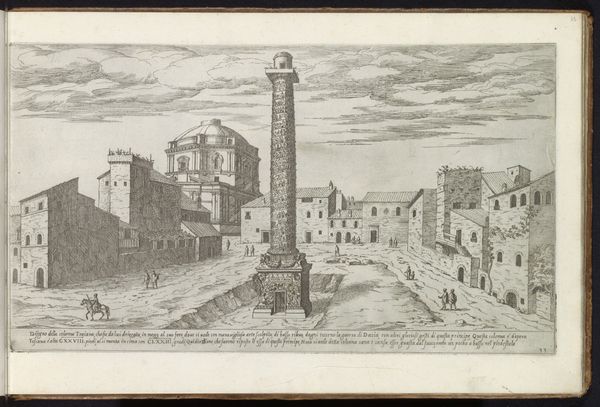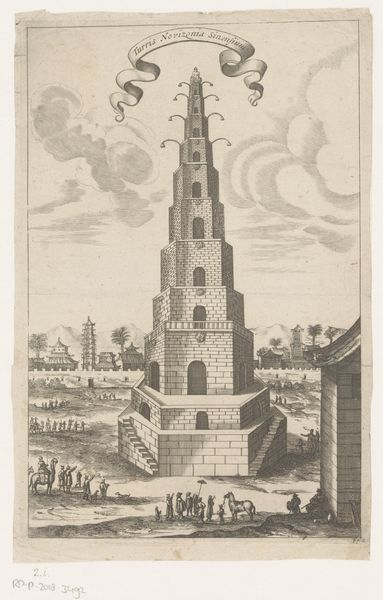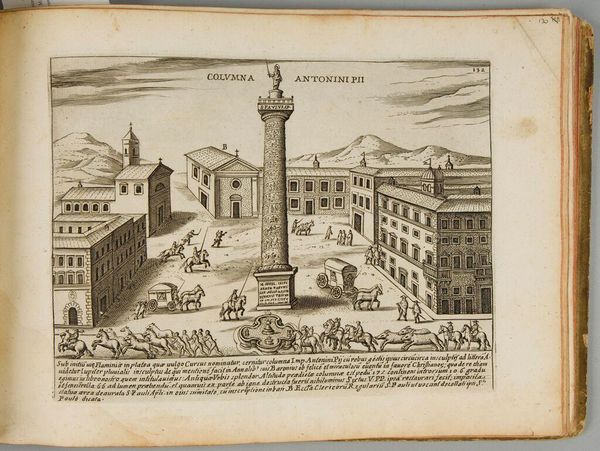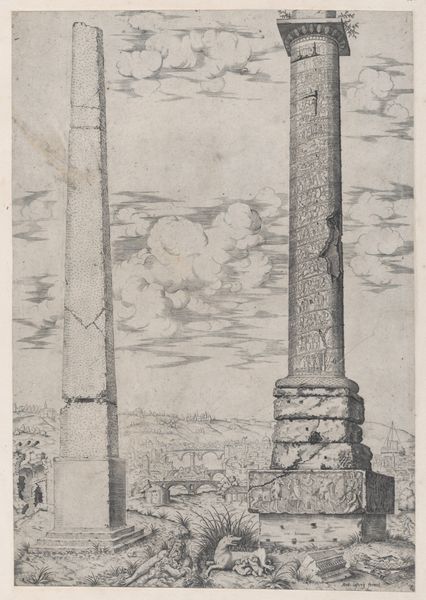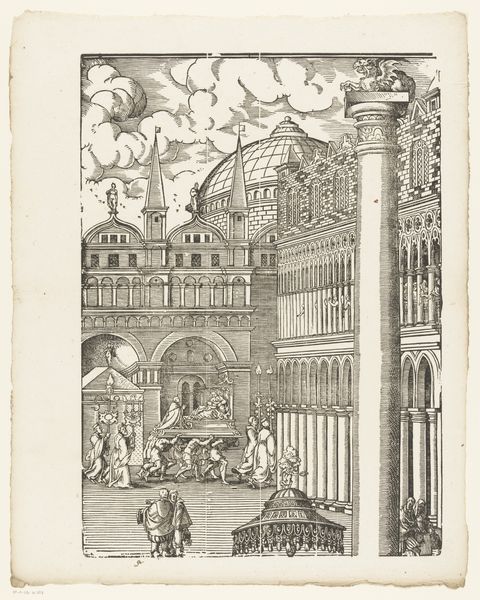
print, engraving, architecture
# print
#
landscape
#
romanesque
#
line
#
cityscape
#
history-painting
#
engraving
#
architecture
Dimensions: height 213 mm, width 156 mm
Copyright: Rijks Museum: Open Domain
Curator: Let’s turn our attention to this print, titled "Zuil van Trajanus te Rome" – or Trajan's Column in Rome – created by Giovanni Maggi in 1651. It’s currently held in the Rijksmuseum collection. What are your immediate impressions? Editor: I’m struck by its formal grandeur, even in this small engraving. The intricate, spiraling detail around the column is so commanding. It gives a real sense of both height and the stories it might be holding within. And the architecture surrounding it is intriguing as it creates such contrast. Curator: Precisely. Maggi captures Trajan's Column as both a physical structure and a powerful symbol of Roman imperial power. The print emphasizes the column's role as a public monument, something deeply embedded within Rome’s urban and political landscape. Editor: I’m interested in what kind of narratives it encodes and transmits through history. Beyond being a marker of imperial success, what other sociopolitical themes come forward when we study it closely? Consider how a Roman audience then may read this display differently now, through, for instance, our lens of anti-imperialism. Curator: That’s key. The spiral frieze that wraps around the column depicts Trajan's military campaigns in Dacia. It acts as a visual narrative of conquest and domination. Its function was very clearly to show Rome's strength to its public. Editor: And this highlights how historical images are not static things. This artwork becomes a critical document ripe for re-interpretation by different groups who question structures of power, patriarchy, and control. Even in reproduction, the symbolic weight of the monument continues to resonate. Curator: Yes, indeed. Thank you. By considering both the historical context and the continuing presence of this image, we can fully appreciate its many layers of significance, inviting all audiences to reflect on the lasting influence of power structures.
Comments
No comments
Be the first to comment and join the conversation on the ultimate creative platform.

